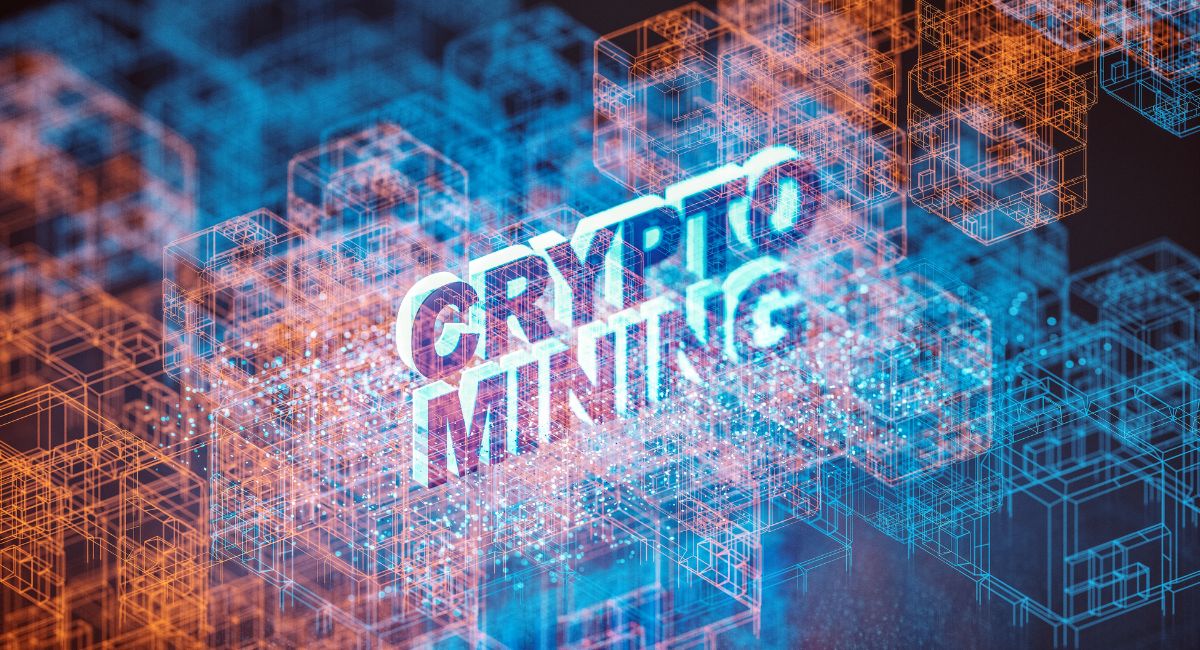The Amazing Next Gen Of Bitcoin Mining In 2024: More Faster, More Efficient, But More Centralized?
Bitcoin, the trailblazing cryptocurrency, relies on a network of miners to validate transactions and secure the blockchain. But mining, the process of solving complex mathematical puzzles to earn rewards, has come under scrutiny for its energy consumption and increasing centralization. As technology evolves, the next generation of miners promises to be faster, more efficient, but potentially poses a threat to Bitcoin’s core principles.
The Rise of ASICs and the Centralization Conundrum
Early Bitcoin mining could be done with personal computers. Today, however, specialized hardware called Application-Specific Integrated Circuits (ASICs) dominate the scene. These custom-built machines are far more efficient at solving mining algorithms, but their high cost creates a barrier to entry for casual miners. This has led to the rise of large-scale mining operations with vast pools of ASICs, centralizing mining power in the hands of a few.
ASICs: A Double-Edged Sword
-
Efficiency Boost: ASICs significantly increased the hash rate (processing power) of the Bitcoin mining network, enhancing its security. They also made mining more profitable for those who could afford these machines.
-
Centralization Concerns: Since ASICs are expensive and purpose-built, bitcoin mining has become less accessible to casual miners using regular computers. This concentrates mining power in the hands of a smaller number of large-scale operations or mining pools.
The Centralization Conundrum:
-
Security vs. Decentralization: A highly centralized mining pool could theoretically gain enough control to manipulate the network. This undermines one of Bitcoin’s core strengths – its resistance to censorship and control.
-
The Quest for Profitability: The mining difficulty of the Bitcoin network automatically adjusts to maintain a constant block generation time. As more efficient ASICs enter the network, the difficulty increases, pushing out miners with less powerful hardware. This creates a cycle that further favors large-scale mining operations.
Potential Solutions:
-
Alternative Consensus Mechanisms: While unlikely for Bitcoin mining itself due to philosophical and economic reasons, some blockchain projects are exploring alternative consensus mechanisms like Proof of Stake (PoS) that are inherently more resistant to ASIC dominance.
-
ASIC-Resistant Algorithms: Theoretical proposals for modifying the PoW algorithm to make it less efficient for ASICs have emerged. However, implementing such changes would be a complex undertaking for the Bitcoin network.
-
Community Governance: The Bitcoin community can play a role in mitigating centralization through soft forks (protocol changes) that discourage the formation of super-large mining pools.
The Efficiency Paradox: Speed vs. Decentralization in Blockchain
One of the fascinating complexities of blockchain technology is the efficiency paradox. This refers to the inherent trade-off between two core principles of blockchain:
-
Decentralization: Distributing the workload and control across a vast network of computers enhances security and prevents manipulation.
-
Scalability and Speed: As the number of transactions on a blockchain increases, processing them can slow down significantly. This can limit the real-world usability of a blockchain for high-volume applications.
Proof of Work (PoW), the consensus mechanism used by Bitcoin, prioritizes decentralization. Every node in the network needs to solve a complex mathematical puzzle to validate transactions, making it secure and resistant to manipulation. However, PoW is computationally expensive and slow, limiting the number of transactions the network can process per second.
The Efficiency Paradox and the Next Generation:
The next generation of blockchain technologies is exploring ways to improve scalability without compromising decentralization. Here are some approaches:
-
Proof of Stake (PoS): Instead of solving puzzles, validators on a PoS network stake their own cryptocurrency. This reduces energy consumption and transaction times.
-
Sharding: The network is divided into smaller partitions (shards), each processing a portion of the transactions simultaneously. This allows for faster transaction processing without sacrificing decentralization.
-
Directed Acyclic Graphs (DAGs): These alternative ledger structures aim to achieve faster transaction speeds and scalability compared to traditional blockchains.
The Next Generation of Bitcoin Miners:
While the concept applies more broadly to various blockchains, the mention of “next generation of bitcoin mining” implies improvements to Bitcoin’s scalability. While some proposed solutions like switching to PoS are unlikely for Bitcoin due to philosophical and economic reasons within the Bitcoin community, there are ongoing efforts to improve Bitcoin’s scalability without compromising decentralization.
These efforts include:
-
Lightning Network: This is a second layer solution built on top of Bitcoin that allows for faster and cheaper microtransactions.
-
SegWit (Segregated Witness): This upgrade frees up block space in Bitcoin, allowing for more transactions per block.
-
Schnorr Signatures: This future upgrade could further increase transaction throughput on the Bitcoin network.
The efficiency paradox remains a central challenge in blockchain technology. The next generation of solutions is actively seeking ways to achieve scalability while upholding the core principles of decentralization. While Bitcoin itself might not undergo radical changes, the broader blockchain ecosystem is constantly innovating to address this critical issue.
Also, read – Bitcoin Mining: Top 8 Intriguing Changes And New Developments In 2024
Finding the Equilibrium: Innovation with Decentralization in Mind
As we discussed, the challenge lies in developing new mining technologies for blockchains that are both efficient (faster transaction processing) and accessible to a broader range of participants, upholding the core principle of decentralization. Here’s how bitcoin mining innovation is tackling this issue:
Alternative Consensus Mechanisms:
-
Proof of Stake (PoS) Variations: Beyond the basic PoS, variations like Delegated Proof of Stake (DPoS) and Byzantine Fault Tolerance (BFT) are being explored. These offer different levels of scalability and decentralization depending on the application.
-
Hybrid Approaches: Some blockchains are experimenting with hybrid models that combine PoW with PoS or other consensus mechanisms. This leverages the strengths of each approach to achieve a balance between efficiency and decentralization.
Scalability-Focused Innovations:
-
Off-chain Scaling Solutions: These solutions move some transaction processing off the main blockchain to secondary layers, reducing the workload on the main chain and improving overall scalability. The Lightning Network for Bitcoin is a prime example.
-
Sharding with Decentralized Governance: Sharding can improve efficiency, but maintaining decentralization in shard selection and validation is crucial. Research is ongoing to ensure a balance between scalability and distributed control within sharded architectures.
Focus on Accessibility:
-
Reduced Hardware Requirements: Moving away from computationally expensive mining methods like PoW can make participation more accessible to those with lower-powered devices.
-
Cloud-based Mining: Cloud mining allows individuals to rent computing power for mining, eliminating the need for expensive hardware investments. However, concerns around centralization need to be addressed in cloud-based solutions.
-
Permissioned Blockchains: These private blockchains offer a level of control and efficiency but are less decentralized. They can be a good option for specific use cases where a broader participant base isn’t essential.
Finding the Right Balance:
The ideal solution likely won’t be a one-size-fits-all approach. Different applications will require different levels of decentralization and efficiency. The key is to find the right equilibrium between these two principles.
The Role of Innovation:
Continuous innovation is crucial for achieving this equilibrium. Here are some promising areas of exploration:
-
New Consensus Mechanisms: Research on entirely new consensus mechanisms that prioritize both efficiency and decentralization is ongoing.
-
Cryptographic advancements: New cryptographic primitives could lead to more efficient and secure blockchain architectures.
-
Interoperability Solutions: Enabling communication and collaboration between different blockchains can unlock new possibilities for scaling and innovation.
The quest for efficient and accessible bitcoin mining technologies within a decentralized framework is a constant driving force in blockchain development. By fostering innovation and focusing on the right balance between efficiency and decentralization, the future of blockchain looks promising for creating a more secure and inclusive digital landscape.
The Future of Bitcoin Mining: A Balancing Act
Bitcoin mining, the process of securing the Bitcoin network and earning rewards in the form of new bitcoins, faces a unique challenge in the coming years. It’s a delicate balancing act between:
-
Maintaining Decentralization: This is the core principle of Bitcoin, ensuring the network is resistant to manipulation and control by any single entity.
-
Enhancing Efficiency: The current Proof of Work (PoW) mining system is energy-intensive and can be slow when processing a high volume of transactions.
-
Accessibility: Ideally, anyone with a computer should be able to participate in mining and contribute to the network’s security.
Here’s a glimpse into what the future of Bitcoin mining might hold:
Potential Scenarios:
-
Gradual Improvements to PoW: The Bitcoin community might focus on optimizing the current PoW system. This could involve advancements in mining hardware and software to reduce energy consumption and improve efficiency without compromising decentralization.
-
Hybrid Solutions: A hybrid approach combining PoW with another consensus mechanism like Proof of Stake (PoS) could be explored. This could leverage the strengths of both systems, maintaining decentralization while potentially improving scalability.
-
The Rise of Layer 2 Solutions: The Lightning Network, a second-layer solution built on top of Bitcoin, could gain wider adoption for faster and cheaper microtransactions. This could lessen the burden on the main Bitcoin network and reduce the reliance on traditional mining.
-
Emergence of Specialized Mining Pools: Large-scale mining pools with access to efficient infrastructure might become more prominent. However, regulations and community efforts might be needed to ensure these pools don’t centralize control over the network.
Uncertainties and Considerations:
-
Energy Consumption Concerns: The environmental impact of PoW mining remains a major concern. The future of Bitcoin mining heavily depends on addressing these concerns and potentially adopting more sustainable solutions.
-
Regulation: Government regulations around cryptocurrency mining could significantly impact the future landscape. Finding a balance between innovation and responsible practices will be crucial.
-
Economic Factors: The price of Bitcoin and the block reward for mining will continue to influence the profitability and attractiveness of mining.
The Importance of Community:
The future of Bitcoin mining ultimately lies with its community. Open discussions, ongoing research, and a commitment to the core principles of decentralization will be essential in navigating the challenges and shaping the future of Bitcoin mining.
Conclusion:
The future of Bitcoin mining is likely to be a continuous evolution, not a single revolutionary change. Striking a balance between efficiency, accessibility, and decentralization will be paramount. By fostering innovation and maintaining a strong community focus, Bitcoin mining can continue to play a vital role in securing the Bitcoin network.
Stay informed with daily updates from Blockchain Magazine on Google News. Click here to follow us and mark as favorite: [Blockchain Magazine on Google News].
Get Blockchain Insights In Inbox
Stay ahead of the curve with expert analysis and market updates.
latest from tech
Disclaimer: Any post shared by a third-party agency are sponsored and Blockchain Magazine has no views on any such posts. The views and opinions expressed in this post are those of the clients and do not necessarily reflect the official policy or position of Blockchain Magazine. The information provided in this post is for informational purposes only and should not be considered as financial, investment, or professional advice. Blockchain Magazine does not endorse or promote any specific products, services, or companies mentioned in this posts. Readers are encouraged to conduct their own research and consult with a qualified professional before making any financial decisions. The featured image used is just a creative depiction of the title and it does not intend to hurt sentiments of any person or institution. If it hurts anyone sentiments, please do not hesitate to reach out to Blockchain Magazine.

 Bitcoin
Bitcoin  Ethereum
Ethereum  XRP
XRP  Tether
Tether  Solana
Solana  USDC
USDC  Dogecoin
Dogecoin  Cardano
Cardano  Lido Staked Ether
Lido Staked Ether  TRON
TRON  Wrapped Bitcoin
Wrapped Bitcoin  Wrapped stETH
Wrapped stETH  Chainlink
Chainlink  Avalanche
Avalanche  Sui
Sui  Stellar
Stellar  Litecoin
Litecoin  Toncoin
Toncoin  Shiba Inu
Shiba Inu  Hedera
Hedera  LEO Token
LEO Token  MANTRA
MANTRA  USDS
USDS  Hyperliquid
Hyperliquid  WETH
WETH  Polkadot
Polkadot  Bitcoin Cash
Bitcoin Cash  Bitget Token
Bitget Token  Ethena USDe
Ethena USDe  Wrapped eETH
Wrapped eETH  Uniswap
Uniswap  Monero
Monero  NEAR Protocol
NEAR Protocol  Pepe
Pepe  WhiteBIT Coin
WhiteBIT Coin  Aave
Aave  Aptos
Aptos  Bittensor
Bittensor  Ondo
Ondo  Internet Computer
Internet Computer  Dai
Dai  Official Trump
Official Trump  Ethereum Classic
Ethereum Classic  Mantle
Mantle  Tokenize Xchange
Tokenize Xchange  OKB
OKB  Gate
Gate  sUSDS
sUSDS  Coinbase Wrapped BTC
Coinbase Wrapped BTC 




